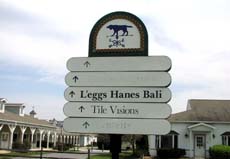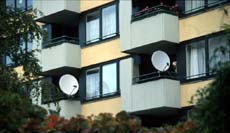Wired communities and the plight of the poor

Dying outlet mall at a highway intersection in Virginia

Apartments with links, Krakow
Complexifying suburban sprawl by wiring the world could make the problems of the poor even worse. William Mitchell points out the dangers:
As traditional locational imperatives weaken, we will gravitate to settings that offer particular cultural, scenic, and climatic attractions -- those unique qualities that cannot be pumped through a wire -- together with those face-to-face interactions we care most about. . .
Telecommunications networking can add great value to localities where relatively well-off people would like to live. It can remove constraints that have prevented them from doing so in the past. But it doesn't do much for localities that have no intrinsic attraction. Nor does it help people who find themselves trapped in marginalized, underserviced areas and are too poor to move. . .
Ultimately it comes down to a basic social and political choice. What will we use the multifaceted and sometimes contradictory affordances of digital technology for? Will employ them -- as seems possible -- to help revitalize small-scale neighborhoods and strengthen interconnections and social interactions? Or will they become a means for the affluent elites to flee the problems of the cities and to create isolated, privileged enclaves while leaving the less fortunate to their fates?
(Mitchell 1999, 155, 77, 82)